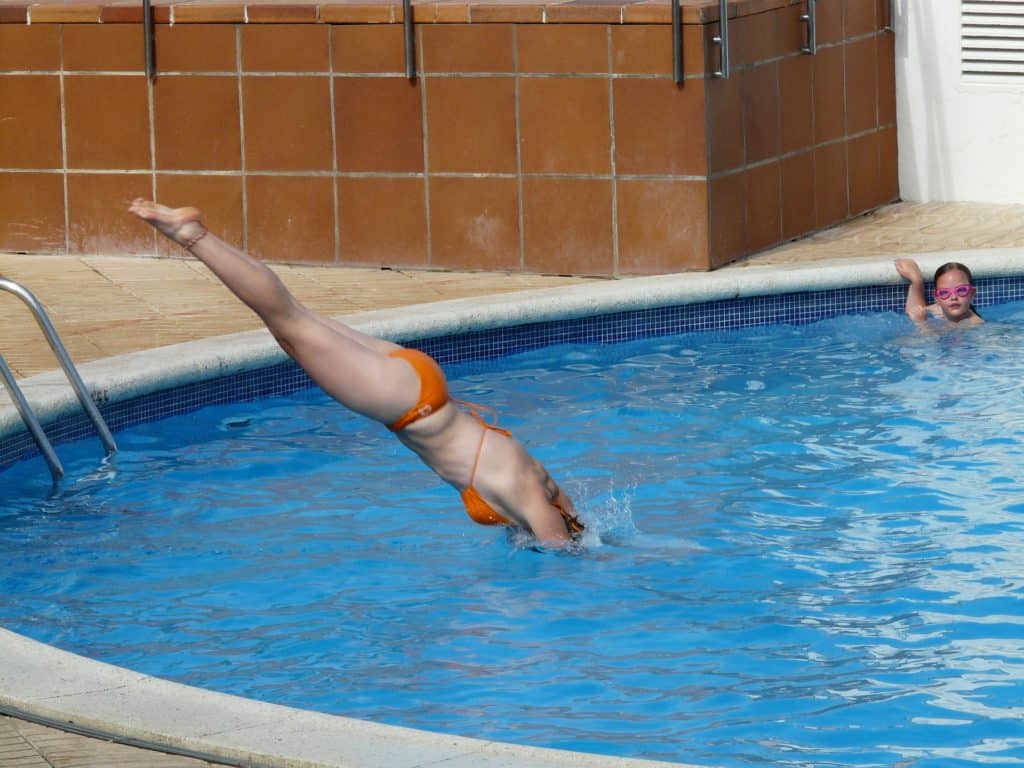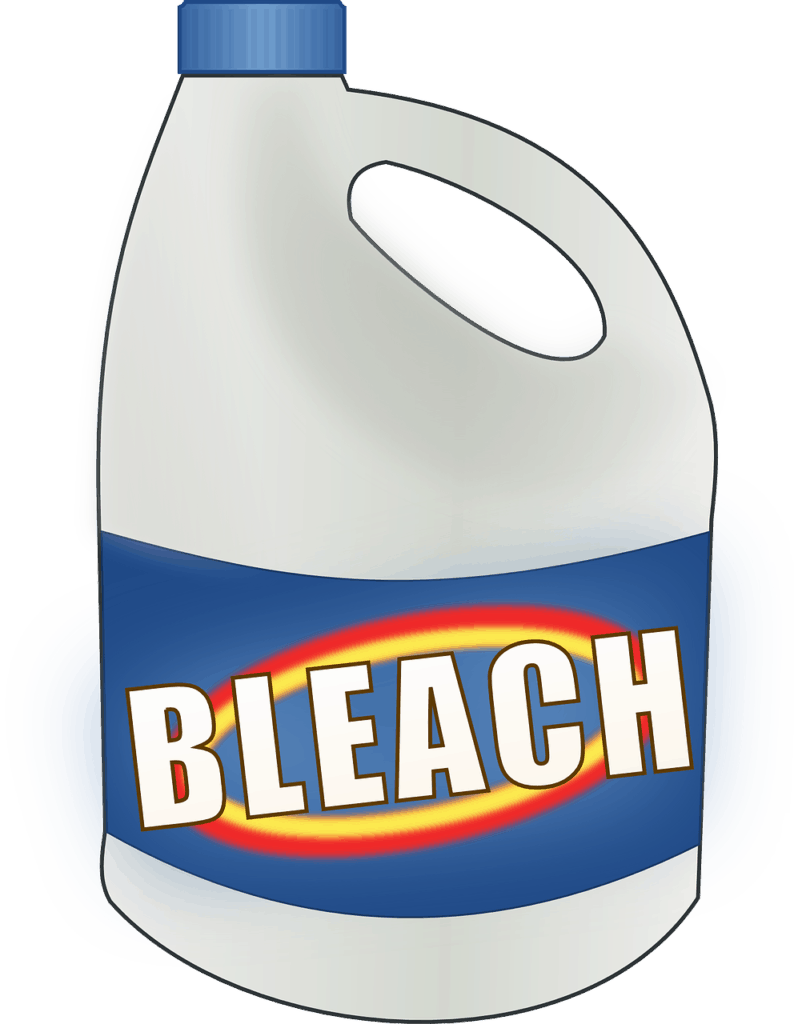This post is brought to you today by a Twitter thread from someone who will remain anonymous. 🤣 Several days ago (sorry this took so long, was mourning Kobe, Gianna, and the other 7 souls lost) I found a tweet thread from someone explaining why you should take a chlorine bleach bath if you have eczema. That day I made a few tweets explaining why you SHOULDN’T take a chlorine bleach bath and why you shouldn’t use chlorine to clean your house. I asked my followers if they would like for me to turn those few tweets into a blog post and they enthusiastically said yes! So here it is. 😄

Anyway, let’s get into why I don’t want to hear about any of you purchasing or using chlorine bleach in your home! Imagine me smacking your hand if you ever pick up that bottle of bleach! LOL If you didn’t know already chlorine is classified as a pesticide, according to the EPA, meaning it kills all microbes, the bad ones AND the good ones.
History of Chlorine Bleach
Karl Wilhelm Scheelefirst discovered chlorine in 1772. Chlorine-based bleaches were invented in Europe in the late 18th century. The bleach was used to make clothes whiter and whiten other products like paper. In 1922, The Electro-Alkaline Co.’s name was changed to Clorox Chemical (now The Clorox Co.). Chlorine became the first agent of chemical warfare in WWI. Shortly after that, it was added to our water supply. In the 1950s, more and more American homes used chlorine bleach to clean their homes and clothing.
Perform a quick Google search for chlorine bleach baths and you will find articles from many “reliable” sources saying it’s safe to take the bleach baths, and it’s great for relieving the itch and discomfort from eczema. What these sources fail to inform their readers about is the dangers of chlorine bleach.
Why You Shouldn’t Take a Chlorine Bleach Bath
Once you draw your hot water to fill your bathtub, add the chlorine bleach, to then sit down in that toxic chemical soup, you’ve effectively inhaled the chlorine fumes, absorbed the chlorine into your bloodstream through your skin, and have begun destroying your gut microbiome, or gut flora. If you are a woman, you have begun destroying your vaginal floraand have made yourself susceptible to yeast infections, bacterial vaginosis, vaginitis, and vulvitis.
Ladies, do you see how critical it is that you DON’T take a bleach bath?! Bleach baths will also dry out your skin terribly, which will impact your skin’s pH. This is also another reason why you can develop vaginal yeast infections. You can also experience these issues from swimming in a chlorinated pool.
Consequently, this is also another good reason to avoid bleached sanitary products, ladies. Opt for organic sanitary pads and liners that don’t use pesticides, chlorine, fragrances or dyes! My favorite brand right now is L. Sold at Target or online. Here’s a link to L.’s Chlorine Free Ultra Thin Pads. Let me know in the comment section if you would like me to review this brand? 🙂Here are a few other products from L. that I use.
This post contains affiliate links which means I will receive a tiny commission to help me run this site at no additional cost to you.

Why You Should Be Cautious of Swimming in Chlorine Pool
Chlorinated pools will obviously have larger amounts of chlorine than taking a bleach bath so guess what I’m going to say?! Do not swim in chlorinated pools very often. Find a saltwater pool and go swimming there! A saltwater pool is one of my wants for my dream house.
Research has shown that the chemicals in chlorinated pools have been linked to health problems in competitive swimmers, such as asthma and bladder cancer. 😳 What is happening in the pool is that chlorine kills pathogens, but during this process, many toxic compounds are formed known as disinfection by-products(DBPs). The eyes and skin are the organs more directly affected in chlorinated water than the lungs. Of all the organs, the liver is the most likely target of DBPs.
Related: 3 Reasons Why Health Nuts Are Disliked
Chlorine’s Toxic By-Products & Why You Shouldn’t Clean with Chlorine Bleach
Organochlorinesare one of the by-products of chlorine. Organochlorines do not breakdown easily; they stay in the environment and our bodies for a very long time. There are 12 organochlorines listed as persistent organic pollutants (POPs). Some of the organochlorines that you may have heard of are dioxin, polychlorinated biphenyls (PCBs), pentachlorophenol (PCP), dieldrin and DDT. Organochlorines are vapor forming and are carried by air. Studies have shown that when laundering clothes with chlorine bleach organochlorines are formed in the headspace of the washing machine. The results from the study also found that residual hypochlorite (bleach) remains in the fabric of clothes after they’ve been washed with bleach, meaning there is sustained dermal contact with reactive chlorine.
Do you STILL want to wash your clothes in chlorine bleach after reading this?? Now imagine how much chlorine bleach your hands absorb when you use cleaning products that contain chlorine bleach?? Here’s a research paperexplaining how cleaning with bleach can create indoor air pollutants.
One more chemical by-product of chlorine I wanted to discuss with you guys is dioxin. To put it simply, dioxins are environmental pollutants known as persistent organic pollutants (POPs). Dioxins have a very toxic potential. Once dioxins are absorbed by the body, they can last for a long time because of their chemical structure and stability, and also their propensity to be absorbed by fat tissue where they can be stored in the body. Their half-life in the body is calculated to be 7-11 years. Long-term exposure can cause impairment to the immune system, nervous system, endocrine system, and reproductive system. Dioxin is also classified as a carcinogen. I can do a completely separate post on dioxin and its effects on the body and the environment.

Chlorine Bleach Alternatives
This post was way longer than I had intended, but I wanted to be as thorough as possible. At the end of the day, it is your decision if you want to use chlorine bleach or not. I know what you are thinking right now. You’re wondering what you can use in place of chlorine bleach. You can use products that are labeled as chlorine-free bleach or oxygen whitener. You don’t need chlorine in your household cleaning products to ensure that your house is clean. Here are a few products that I love to use: Seventh Generation’s Chlorine-Free Bleachand Grab Green’s Bleach Alternative Pods. I hope that you try them and if you do, be sure to come back and let me know what you think!
Comment down below and tell me what you NOW think about chlorine bleach and what you are planning to do next. Also, be sure to use the share buttons at the top, side, or bottom of this post to share it with your friends and family. Don’t keep this knowledge to yourself! LOL Make sure you are following me on social media: @brittsliladvice on Twitter and IG. Also, be sure to like my Facebook page as well.


Leave a Reply